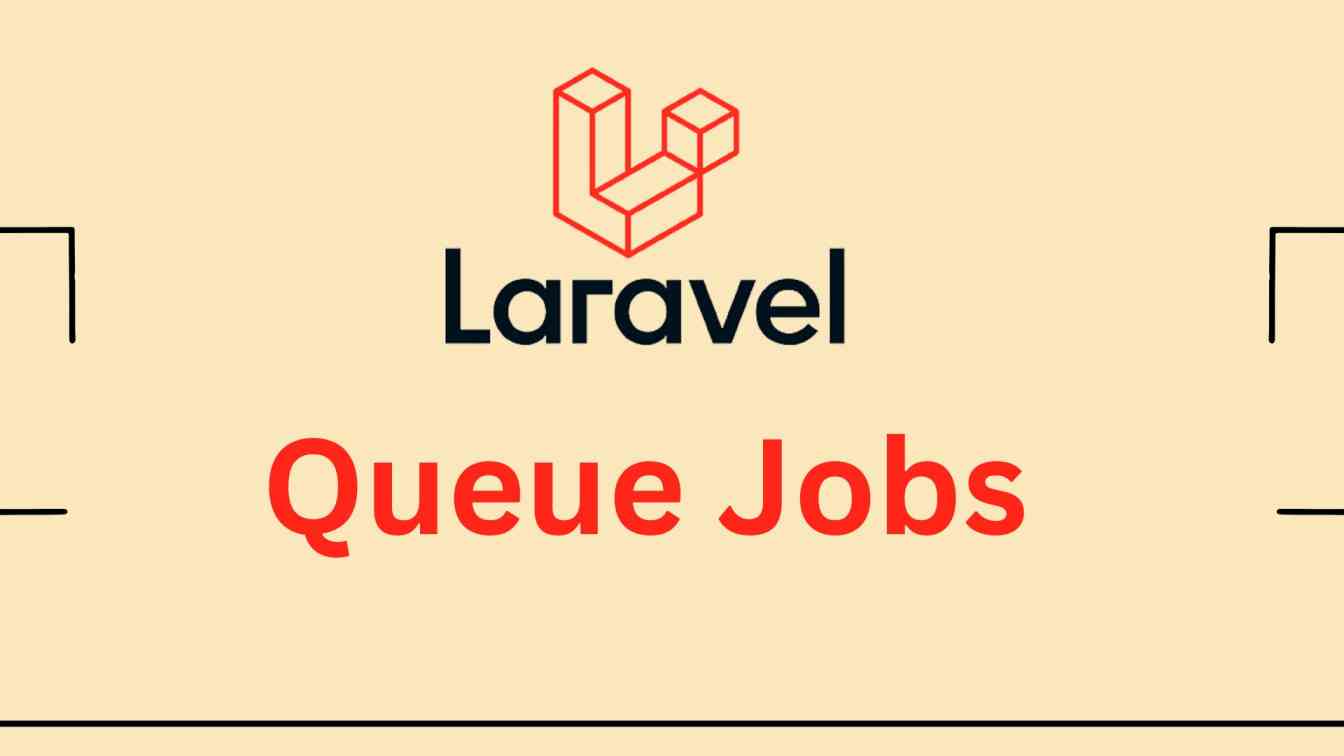Supercharge Your Laravel App With Queues – A Developer’s Experience With Background Email Sending

When I first started working with Laravel, background jobs were just a buzzword to me. I had heard they were great for performance and user experience — but like many developers, I didn’t really need them. At least, that’s what I thought.
Then came the day I implemented email sending in a registration flow, and I learned exactly why Laravel Queues are so powerful.
Here’s my full experience using Laravel Queues to send emails in the background — from confusion to confidence.
🔍 What Are Laravel Queues?
Laravel Queues let you defer heavy or slow tasks to be processed later — asynchronously — in the background.
Instead of executing a task (like sending an email) in the middle of an HTTP request, you dispatch it to a job that runs on a separate process.
It’s like asking your assistant to send a thank-you note, while you move on to your next meeting.
Supported queue drivers include:
-
sync(no queue — executes immediately) -
database -
Redis✅ (high-performance and scalable) -
Amazon SQS,Beanstalkd, and more
🎯 Why I Needed Queues (Email Problem)
I was building a user registration system. After successful registration, we wanted to send a welcome email.
So I did this:
Mail::to($user->email)->send(new WelcomeEmail($user));it worked — until I tested it on production.
😫 The user had to wait 4-6 seconds before getting the success message.
😱 Sometimes the SMTP provider (Mailgun) failed, and the entire registration failed.
🤯 If I sent emails to multiple users in a loop — it crashed the server.
I knew then: this should not be happening in real-time.
Email sending is a background job.
That’s when I decided to implement Laravel Queues.
🛠️ How I Integrated Queued Emails (Step-by-Step)
Let me walk you through exactly how I restructured the app to use queues for sending emails in the background.
📦 Step 1: Configure .env for Queues
In the .env file, I changed the queue connection to database for easy setup:
QUEUE_CONNECTION=databaseThen I ran the queue table migrations:
php artisan queue:table
php artisan queue:failed-table
php artisan migrate💌 Step 2: Create the Mailable
I already had a Mailable:
php artisan make:mail WelcomeEmail --markdown=emails.welcomeIn WelcomeEmail.php, I made one small change — added the ShouldQueue interface:
use Illuminate\Contracts\Queue\ShouldQueue;
class WelcomeEmail extends Mailable implements ShouldQueue
{
public function __construct(public User $user) {}
public function build()
{
return $this->subject('Welcome to our platform!')
->markdown('emails.welcome');
}
}That’s the key! This tells Laravel: “Don’t send this now — queue it!”
🧠 Step 3: Update Controller to Queue Email
Instead of send(), I used queue():
use App\Mail\WelcomeEmail;
use Illuminate\Support\Facades\Mail;
Mail::to($user->email)->queue(new WelcomeEmail($user));Now Laravel inserts this email into the jobs table instead of firing it immediately.
🏃 Step 4: Start the Worker
To actually process the queue, you need a worker running:
php artisan queue:workOnce this is running, it picks up jobs from the queue and executes them — sending the email without blocking the main user request.
💌 Email View (Optional)
Here's what my markdown email looked like (resources/views/emails/welcome.blade.php):
@component('mail::message')
# Welcome {{ $user->name }} 🎉
Thanks for joining our platform!
We're excited to have you on board.
Click below to get started:
@component('mail::button', ['url' => route('login')])
Login Now
@endcomponent
Thanks,
{{ config('app.name') }}
@endcomponent
🧭 Where to Use Queues (and Where Not to)
✅ Use Queues For:
-
Sending emails (welcome, newsletters, notifications)
-
Generating and uploading reports
-
Processing payments
-
Resizing or uploading images
-
Calling 3rd-party APIs
🚫 Avoid Queues When:
-
You need real-time feedback (like showing a calculated result on screen)
-
The job is too lightweight to justify backgrounding
💡 Lessons I Learned
-
Always implement queues when jobs can be run on the background that will not hamper user experience.
-
You’ll immediately feel the difference in user experience — faster responses, and more reliability.
-
Jobs that fail don’t crash your app — they’re retried or logged.
- You can monitor queues with tools like Laravel Horizon if you use Redis.
✅ Final Thoughts
Implementing queues for email sending changed the way I think about responsiveness and performance. Instead of trying to make everything fast, I learned to move the heavy lifting out of the user’s way.
Laravel Queues make that incredibly easy. And once you set them up — it’s like giving your app a second engine that quietly handles the hard stuff.
✍️ Next will be on Queue jobs monitoring with Horizon
Happy coding 📍
Related Blogs
Integrating payment gateways like Stripe, SSLCommerz, or Bkash is a common need in web development. But if not done right, it can lead to messy, repeated code and poor resource management. In this blog, we’ll explore how to implement a clean, scalable, and reusable payment system using the Singleton Pattern, Strategy Pattern, and Dependency Injection in Laravel.
Alright, Laravel developers, let's talk shop. We love Laravel for its elegance, convention over configuration, and how quickly it lets us build. But as our applications grow, even in a framework as opinionated as Laravel, we can fall into traps: repeating the same logic across different "service" classes, inconsistent data handling, or struggling to manage complex workflows.
Debugging is one of the most crucial skills every developer must master, yet it's often overlooked in formal education. Whether you're a beginner writing your first "Hello World" program or a seasoned developer working on complex enterprise applications, debugging will be your constant companion throughout your coding journey.